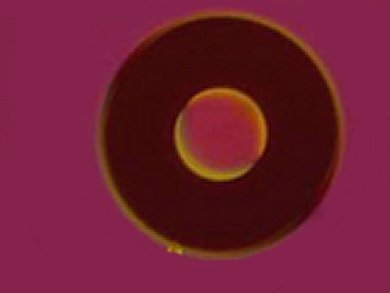Aaron Ohta and colleagues, University of Hawaii at Manoa, showed that disk-shaped, hydrogel microrobots made of poly(ethylene glycol) diacrylate (PEGDA) moved by a laser pulse can assemble cells for culturing purposes and could be used to organize cells into tissues that can grow outside of the body.
The microrobots are moved optothermally by a laser pulse. The laser is shone straight through an 80-μm-diameter gas bubble in an aqueous medium and heats its far sides. The temperature gradient at the bubble microrobot’s surface causes a thermocapillary flow. Its vertical component floats the bubble and microrobot above the substrate at up to 320 μm s−1. The parallel component causes the bubble, and the microrobot above it, to center itself over the laser point. The bubble follows the movement of the laser spot.
A single microrobot or a pair of microrobots working in cooperation were used to move 20-μm-diameter polystyrene beads into different patterns. They were also used to assemble patterns made of single yeast cells and cell-laden agarose microgels. Both were cultured and the cells successfully multiplied.
The researchers now want to control many microrobots at once which should make it easier and faster to accomplish complicated micro-assembly tasks, such as creating artificial tissues and organs in a laboratory setting.
- Hydrogel microrobots actuated by optically generated vapour bubbles,
Wenqi Hu, Kelly S. Ishii, Qihui Fan, Aaron T. Ohta,
Lab Chip 2012, 12, 3821-3826.
DOI: 10.1039/C2LC40483D - Video: Micro-Robots Made of Bubbles That Are Powered by Lasers




